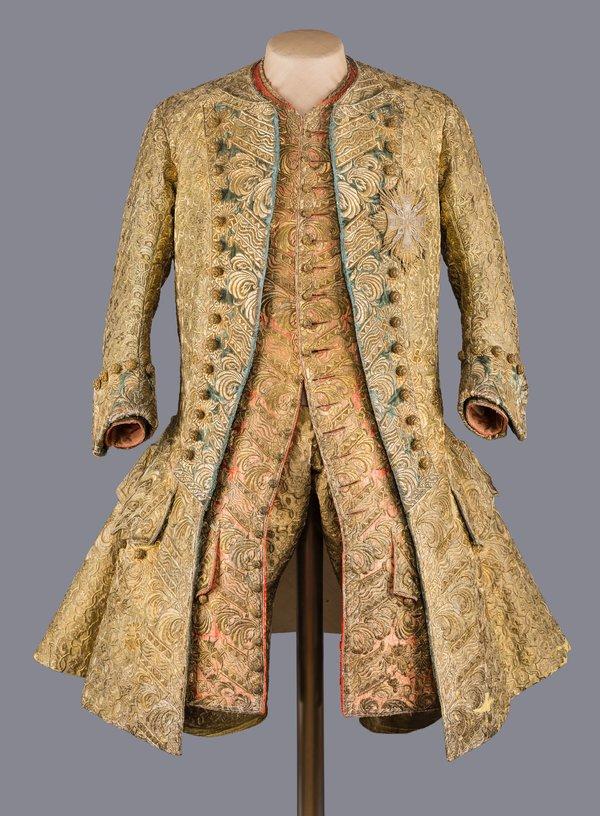BERLIN — From a silver fireplace screen to a jacket spun with golden thread, artifacts from the state apartments of Dresden’s Royal Palace represent the dynasty of August the Strong in full splendor. The property was destroyed during the Allied bombing of February 1945 that reduced much of the Saxon city’s center to rubble, but will rematerialize this September in the palace’s west wing.
The opening, three centuries after the apartments’ inauguration to celebrate the marriage of the Electoral Prince Friedrich August and the Archduchess Maria Josepha, follows a $38 million reconstruction involving handmade tapestries and ceiling paintings.
Also soon to open is the Semper Gallery, after a $57 million renovation. The 19th-century building adjacent to the palace, which was also damaged in World War II, will be home to a permanent exhibition juxtaposing its old masters collection with a variety of sculpture.
As a preview of the new additions to Dresden’s museum landscape, a selection of 23 paintings, swords, porcelain vases and more will be on display at Tefaf, the fine art fair in Maastricht, the Netherlands, this month. The exhibit is a tribute to both imperial might and the craftsmanship of a bygone age.
Marion Ackermann, general director of Dresden’s State Art Collections, called the apartments a “tremendous human achievement” in which handwork was brought “to the highest point of precision.” She considers the reconstruction “a European project in that we had to gather expertise from all over the Continent,” she said, much as Dresden’s 18th-century court attracted people from around the world.

A justaucorps, a knee-length coat worn by August the Strong in 1719.CreditSKD, photo by J. Lãsel
August the Strong reigned not only over Saxony but also, from 1697 until his death in 1733, Poland and Lithuania, creating an axis with Russia. The style of his court, however, was modeled after Versailles.
The red silk wall tapestries for the state apartments’ opulent audience chamber were re-created in Lyon, France, where they were originally purchased, while green silk velvet for the state bedroom was produced in Genoa, Italy. A piece of canopy from the state bed, which was found in storage, provided fabric samples.
“It’s a kind of detective work,” said Dirk Syndram, director of the State Art Collections’ Armory Chamber and Green Vault, museums in the Residential Palace. The newly married royal couple never actually slept in the apartments, however, which Mr. Syndram explained was rather “a dynastical representation of power” (Friedrich August became August III in 1734, maintaining his father’s titles in Eastern Europe).
The Maastricht exhibit includes the original golden justaucorps, a French-style knee-length coat worn by August the Strong to the 1719 wedding festivities. It is one of eight outfits that, alongside royal weaponry, represent “the political height” of his reign, according to the textile conservator Stefanie Penthin, and will have its home in the state bedroom.
Also on display are swords, scabbards and a walking cane made in Japan at the turn of the 18th century, all gifts to August from Peter the Great. Mr. Syndram explained that the objects were a rarity at the time in Europe, given the lack of access to Japan.
Most of the apartments’ furniture was preserved in castles outside Dresden during World War II and will now return in restored form. Ceiling paintings by Louis de Silvestre measuring over 750 square feet were re-created based on color slides that were archived starting in 1943, once the Nazis anticipated Allied bombing.
“It’s a historical absurdity,” Ms. Ackermann said. “Hitler sent out historians and photographers to Germany and occupied regions to document wall and ceiling paintings once he recognized that the war would come to an end badly.”
Despite deep scars, the rebuilt city of Dresden has bounced back as an international tourist destination. Of the 2.2 million visitors to the state art collections last year, almost half were from outside the country.
The Semper Gallery, which is to open in December, has been refurbished to allow for the maintenance of proper air temperature and wireless internet that supports multimedia guides. The building has also been overhauled to improve lighting design.
“There are instances where a sculpture is formed perfectly in the space with its shadow,” Ms. Ackermann said.
She added that the gallery would provide the space and conditions “to present the old masters in a necessary degree of intensity,” noting the potential for special exhibits around main attractions such as the untouched paintings of Bellotto and Cranach. “We can now create exciting connections between works,” she said. “In principle, we will be testing this out in Maastricht.”
Featured at Tefaf from the collection will be Rembrandt’s “The Abduction of Ganymede,” which fittingly travels to the Netherlands upon the 350th anniversary of the painter’s death. Among the four sculptures included is a Roman antique, “Torso of a Dancing Satyr,” that dates from the early first century A.D.
“We arrived at a selection that shows the full spectrum of the gallery,” Mr. Syndram said.
But only when the sites reopen in Dresden will the objects’ historic context fully emerge. It was August III who in 1754 purchased perhaps the old masters collection’s most famous painting, Raphael’s “Sistine Madonna,” continuing the legacy of his father, who laid the cornerstones of Dresden’s state museums with the Green Vault, Print Gallery, porcelain collection and more.
“We are, so to speak, pressing the reset button,” Mr. Syndram said.







